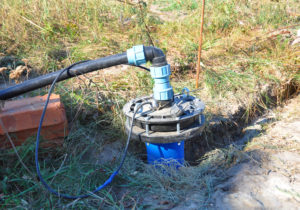Well Recovery Testing
The Issue
Private water systems (wells) are common in Maine and may not be able to furnish an unlimited supply of water in a short period of time. As water is drawn out of a well the water level generally drops. When withdrawal ceases, groundwater recharges the well and the water level rises. A typical household uses about 90 gallons per bedroom per day for basic sanitary purposes. This should ideally be available within a 4 hour period but certainly within a 24 hour period. The rate at which water flows into the well (the recharge rate) will determine how much water can be withdrawn day-in and day-out.
Our Service

The depth and the static water level of the well are measured. A sonic water level meter is affixed to the well head and the water is partially drawn down. The meter records the depletion and recharge rates of the well. The meter is removed from the well head and connected to a computer. The computer downloads the data, and a graph is generated of the well’s performance. The recharge rate is then determined. The recharge rate and the well’s storage capacity are compared with the expected internal water demand of the home based upon the number of bedrooms. The well is judged as “adequate”, “limited”, or “severely limited”. An adequate flow provides enough supply for sanitary needs plus a surplus for watering the lawn, etc. A limited or severely limited flow may require careful management or storage to provide sufficient supply for basic sanitary needs.
